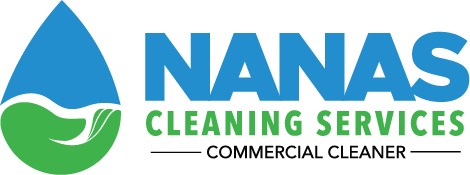In this article, we will talk about Efficient Cleaning of Restaurant Kitchen Equipments with important tips. Read now!
In the bustling world of the restaurant industry, where culinary masterpieces are created and tastes are savored, there’s a hidden hero: efficient kitchen equipment.
While diners revel in the delightful dishes that emerge from these busy kitchens, it’s the sturdy stoves and reliable hoods that form the backbone of any restaurant’s culinary endeavors.
In this article, we will provide you with practical tips for the efficient cleaning of restaurant kitchen equipment, with a special focus on stoves and hoods.
Types of Kitchen Equipment
Restaurants are a melting pot of diverse cuisines, each requiring its unique set of kitchen equipment. Here, we’ll delve into the common types of kitchen equipment, highlighting the distinctive cleaning requirements of stoves and hoods:
Stoves: Stoves are the workhorses of restaurant kitchens. Whether it’s an open flame grill in a steakhouse or a range with multiple burners in a bustling bistro, these appliances are subjected to intense cooking and grilling. They need daily attention, given the grease, sauces, and food particles they come into contact with.
Hoods: Kitchen hoods, commonly known as exhaust hoods or range hoods, play a vital role in maintaining a clean and safe kitchen environment. Their primary function is to remove smoke, odors, grease, and heat from the kitchen. Due to this task, they tend to accumulate a significant amount of grease and other particulates over time.
Daily Maintenance Techniques – Cleaning of Restaurant Kitchen
Regular maintenance is the backbone of a well-functioning restaurant kitchen. Here are some practical tips for daily upkeep of stoves and hoods:
Stoves:
- Clean Spills Promptly: Spills and splatters on stoves can quickly become burnt-on and challenging to remove. Clean them promptly to prevent buildup.
- Drip Pans and Burner Covers: Remove and clean drip pans and burner covers daily. These are hotspots for grease accumulation.
- Burner Grates: Clean burner grates and griddles after each use. A brush or scraper can help remove residue.
- Oven Cleaning: If your kitchen has ovens, follow a regular cleaning schedule to prevent grease and food residue buildup.
Hoods:
- Daily Inspection: Regularly inspect the hood and filters for grease buildup.
- Filter Cleaning: Hood filters should be cleaned daily, or more often if needed, to prevent grease buildup.
- Exterior Cleaning: Wipe down the exterior surfaces of the hood to remove any visible grease or particulate matter.
- Fan and Ducts: Regularly check and clean the exhaust fan and ducts to prevent blockages.
Implementing these daily maintenance techniques ensures that your kitchen equipment operates efficiently and safely while prolonging their lifespan.
Deep Cleaning Strategies
While daily maintenance is essential, periodic deep cleaning is equally critical for the longevity of your equipment and overall hygiene. Deep cleaning of stoves and hoods involves thorough cleaning and degreasing to remove accumulated residue.
Stoves:
- Remove Burner Heads and Grates: Disassemble burner heads and grates for a more thorough cleaning. Soak them in a degreasing solution.
- Degreasing Solution: Use a degreaser or a mixture of water and vinegar to clean stovetops and control knobs.
- Oven Cleaning: For ovens, deep cleaning includes scrubbing walls, floors, and racks, and using oven-specific cleaners.
- Professional Help: Periodically, seek professional deep cleaning services to ensure no hidden grease or residue remains.
Hoods:
- Filter Replacement: Depending on usage, hood filters may need replacement. Grease-laden filters can be soaked in a degreaser solution.
- Internal Cleaning: The interior of the hood should be thoroughly cleaned, including fan blades and ducts. A professional service is often recommended for this task.
- Safety Checks: During deep cleaning, inspect and maintain all safety mechanisms, including fire suppression systems.
Deep cleaning ensures that all grease, residue, and potential fire hazards are eliminated. It also contributes to maintaining a clean and safe cooking environment.
Eco-Friendly Cleaning Solutions
In today’s environmentally conscious world, adopting eco-friendly cleaning solutions is a smart choice. These solutions not only prioritize the environment but also contribute to a safer and healthier workplace for your staff. Here are some benefits of eco-friendly cleaning solutions:
- Reduced Environmental Impact: Eco-friendly products have a reduced impact on the environment during production and use.
- Healthier Workplace: These products typically contain fewer harmful chemicals, leading to better indoor air quality and reduced health risks for employees.
- Regulatory Compliance: Many regions and industries have regulations related to eco-friendly practices. Using such products helps your restaurant stay compliant.
- Positive Brand Image: Demonstrating your commitment to sustainability can enhance your restaurant’s image, attracting environmentally conscious customers.
Incorporating eco-friendly cleaning solutions into your kitchen equipment maintenance helps create a greener and healthier work environment.
Safety Measures
Safety is paramount when it comes to the cleaning of restaurant kitchen equipment. Implementing safety measures is essential to avoid accidents and ensure a secure working environment.
While the United States does not have a federal law requiring customer access to restaurant kitchens, some states or localities may have their regulations regarding kitchen inspections.
Here are some essential safety measures:
- Slip and Fall Prevention: Grease buildup can create slippery surfaces. Use non-slip mats and ensure all staff wear slip-resistant shoes.
- Fire Safety: Follow safety guidelines and inspect fire suppression systems regularly. Ensure that fire extinguishers are easily accessible.
- Proper Ventilation: Maintain adequate ventilation to reduce exposure to fumes, which can lead to health issues.
- Chemical Handling: Train your staff in the safe handling and use of cleaning chemicals. Store chemicals securely and away from food storage areas.
- Emergency Procedures: Establish clear procedures for handling kitchen emergencies, and ensure all staff are well-informed about them.
- Staff Training: Regularly educate your staff on safety measures and best practices for cleaning kitchen equipment.
Remember that safety is a shared responsibility, and it’s essential for protecting both your employees and customers.
Cleaning and maintaining restaurant kitchen equipment is a complex and vital task.
Ensuring proper cleaning is not only crucial for the longevity of your equipment but also for the safety of your staff and the quality of the food you serve.
Nanas Restaurant Cleaning Services
If you’re finding it challenging to manage the cleaning of your stoves and hoods effectively, consider seeking professional assistance. Nanas Cleaning, with its expertise in commercial kitchen equipment cleaning, can provide comprehensive and efficient solutions.
Our professional team understands the unique demands of restaurant kitchens and can ensure that your equipment is cleaned to the highest standards.
Don’t compromise on hygiene and safety in your restaurant. Contact Nanas Cleaning today to discuss your specific needs, schedule a consultation, and take the first step toward maintaining a clean and safe kitchen environment.
Remember, cleanliness in your kitchen isn’t just a matter of compliance; it’s the recipe for a successful and thriving restaurant.



